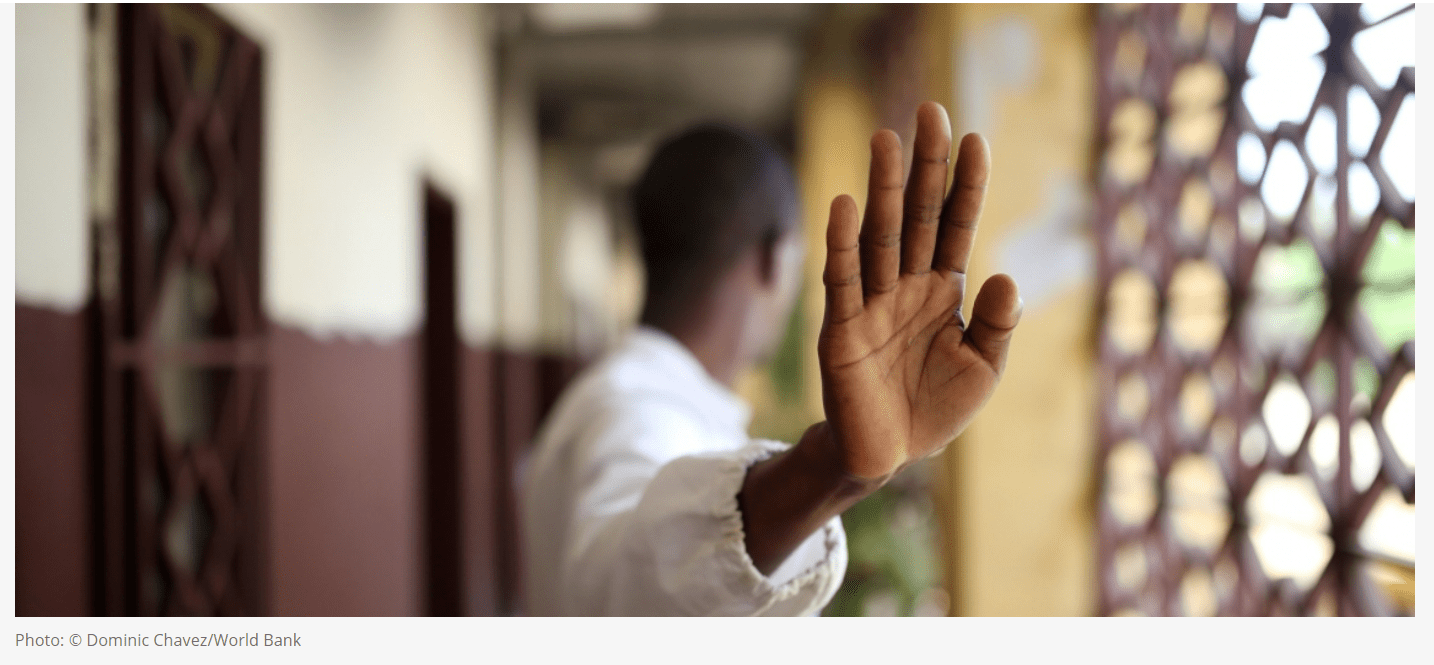By Jim Anderson / World Bank
The World Bank’s commitment to helping countries control corruption dates to 1996 when then President James Wolfensohn made his “cancer of corruption” speech. It was the first time the issue was given such prominence by a World Bank President and put squarely on the agenda of the institution.
A lot has happened since then. In 1996 only 22 countries had right to information laws, compared to 123 today. The Open Data revolution had not yet begun; neither technology nor attitude supported such openness in most countries. Global standard-setting instruments such as the OECD Anti-Bribery Convention and the UN Convention Against Corruption, were envisioned at that time but not enacted. Others, such as the Extractive Industries Transparency Initiative (EITI) got launched and matured since. Behavioral economics had not yet been recognized by the Nobel Prize committee. No one had heard of GovTech, and the Open Government Partnership had not yet been established. Terms like illicit financial flows and e-procurement were not common, and the Panama Papers and Luanda Leaks were well in the future. And no one had heard of COVID-19.
Addressing corruption not only saves money and stops bad behavior, it helps achieve a wide range of development goals. Think, for a moment, about the many ways corruption can undermine human capital development. Ghost workers in the education system, kickbacks for school meals contracts and false degrees, weaken the efficacy of learning-related spending. Bribery and fraud in procuring pharmaceuticals or medical equipment can weaken survival rates and constrain the ability of children to thrive. Corruption in infrastructure and among traffic police can lead to unsafe roads, weakening human capital and undermining access to opportunities.
“Corruption has evolved over the last two decades, and in the course of the COVID-19 response. Our approach is evolving as well.”
The World Bank’s approach to controlling corruption needs to keep up with the times. What should we be doing differently? Anticorruption Initiatives—Reaffirming Commitment to a Development Priority outlines an approach, organized around five initiatives.
- Global norms and standards are essential in shaping policy and ensuring governments take action. The World Bank’s global perspective can help. Progress in the criminalization of corrupt acts and in strengthening transparency have shown the value of standards. Can greater consistency in approaches to beneficial ownership transparency, management of conflicts of interest, and other areas do the same? How can we better track progress? The initiative on Global Standards and Monitoring proposes some areas of focus.
- Corruption is often transactional but it can also be embedded in networks, tilting the playing field to the advantage of political elites and connected firms . Given what we’ve learned about power, politics, business and corruption, can we do more to address state capture? The initiative on Power and Money takes on this challenge.
- Transparency has value in its own right. Access to information is a basic human right. How can we take advantage of new technologies to analyze the torrents of data for patterns we wouldn’t otherwise notice, and better engage stakeholders for oversight, and accountability, and to make services more responsive and equitable? The High Definition Transparency initiative supports efforts to respond to these challenges.
- Corruption comes in all forms, and these can vary systematically. Controlling patronage networks in customs, for example, calls for approaches different from those needed for embezzlement in state-owned enterprises or bribery in the courts. It’s been 13 years since The Many Faces of Corruption outlined sector-specific approaches. A Sector-Based Approach will update our work to reflect the changes in technology and thinking.
- The common definition “abuse of public office for private gain”, projects an image of a lone person doing wrong. In many cases, though, they get help from bankers and lawyers and accountants, sometimes in off-shore jurisdictions and financial centers in advanced economies. And what about the behavior of the firms and individuals? Addressing the Facilitators initiative highlights what can be done in the professions and locations that facilitate corruption and take on the stubborn social norms that surround both bribe payers and bribe takers.
We will be expanding on each of these initiatives in a series of blog posts. Corruption has evolved over the last two decades, and in the course of the COVID-19 response. Our approach is evolving as well, to reflect the global and local challenges countries face today as well as the new opportunities presented by technology, behavioral and political science insights, a growing global community focused on norms and standards, and partnerships. Our paper reflects these new realities and sets out a road map to work closely with governments, international partners and civil society to take anticorruption in new directions and reaffirm that controlling corruption is a development priority.
CREDIT: The Post Corruption has Modernized, so should Anti-Corruption Initiatives first appeared in the World Bank Blog on 13th July, 2020.
